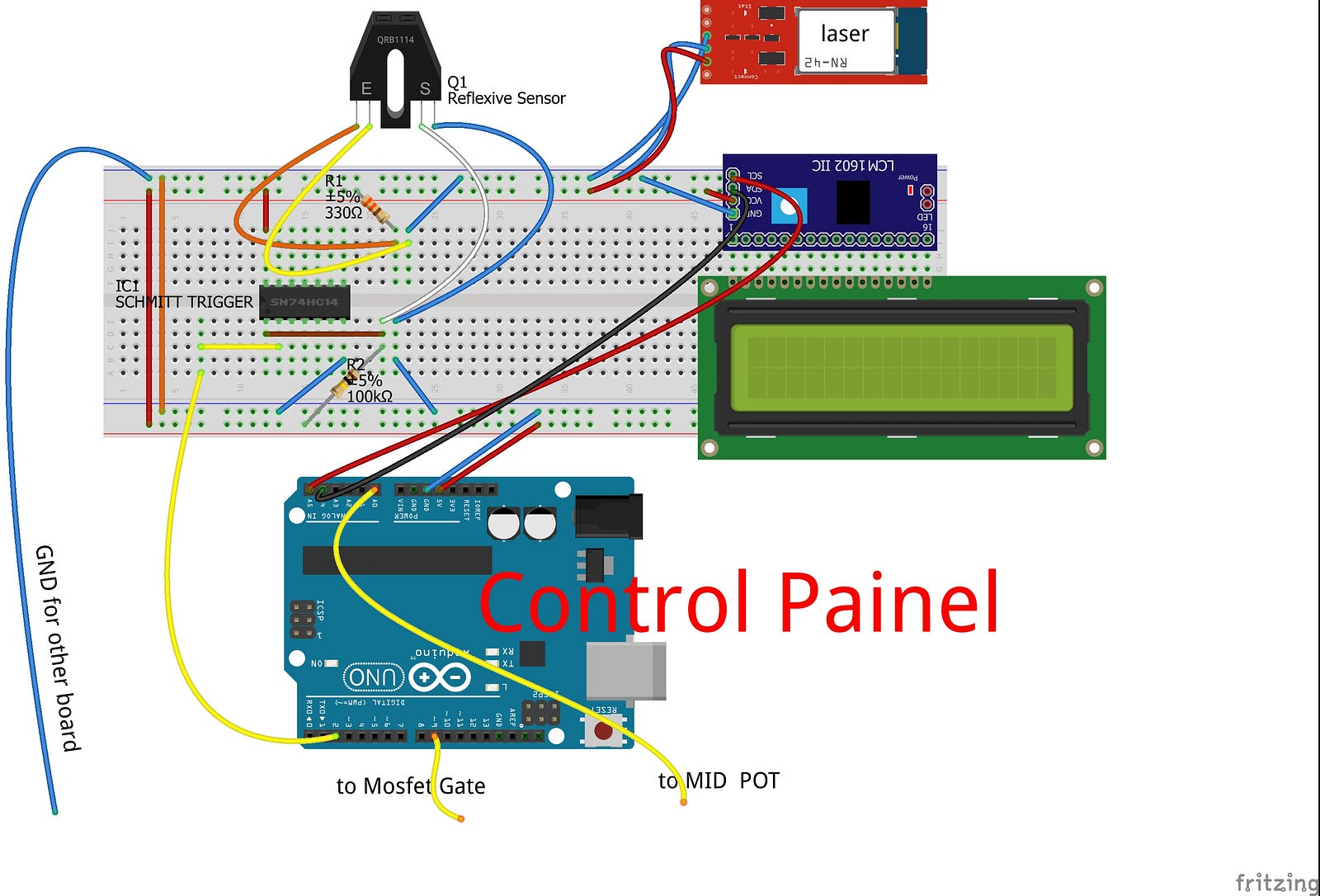Pid Regulyator Na Arduino
Light Emitting Diodes (LED) Light emitting diodes (LEDs) are semiconductor devices that emit light when voltage is applied across them. LEDs typically have a fixed voltage drop of around 2V (depends on the LED), which is the voltage required to cause it to illuminate. The brightness can then be controlled directly by varying the current going through the device.


In most applications (e.g. Indicators), a current-limiting resistor is connected in series with the LED to provide a fixed brightness for a given control voltage. Led-diagram In our application, we will use a fixed current-limiting resistor of 330Ω and a 5V control voltage, but we will use a technique called pulsewidth modulation (PWM) to effectively vary the current passing through the circuit. PWM works by rapidly toggling a digital output between its high (e.g.
5V) and low (e.g. 0V) values, with varying durations of on and off time. The ratio of the on time to the total period of the PWM signal is referred to as duty cycle, and is expressed as a percentage. The logic behind this is: if you were to integrate the voltage over one period of the PWM signal, the effective voltage would be the duty cycle times the 'on' voltage level. If the switching is fast enough, many sensors (including our own eyes) will not be able to detect that the actuator (e.g. An LED) is actually turning on and off, but instead it will detect an intermediate output roughly corresponding to the equivalent voltage level.
For mechanical systems, such as DC motors, the mechanical dynamics are often slow enough with respect to the PWM signal that their output will actually smoothly vary. The Arduino Uno allows us to output a PWM signal on several of its pins. This is done by setting the pin as an output, and using the function. This function accepts an unsigned (positive) 8-bit integer value ((2^8)-1) between 0 (pin fully off, 0% duty cycle) and 255 (pin fully on, 100% duty cycle). Control System Now we'll put the LED and photocell together in order to obtain a desired brightness level. Here is a block diagram of the control system we will implement to achieve this: controller In this controller example, we will use voltage as a representation of brightness. Because of the voltage divider configuration, the voltage read by the Arduino's input pin will vary proportionally to the brightness sensed by the photocell.
The measured voltage is compared to a voltage representing the desired brightness, resulting in some error. This error is then fed into a controller, which transforms the error into a PWM signal to change the LED brightness. For example, if the measured brightness is lower than desired, the error will be positive, and the controller coefficients will produce a positive PWM signal to drive the LED to become brighter. This has the effect of increasing the measured voltage, hence decreasing the error.
Arduino - Motor PID Speed Control. Make a program for the Arduino Pro Mini in Visual Studio to control motor speed with PID which can archive it exactly. Rukovodstvo po remontu avtomobilya daihatsu applause. Send speed settings to Arduino (2) Send PID gain (kP, kI, kD) to Arduino (3) Receive motor speed -> show on graph. Visual studio program.
Identify nvidia graphics card by serial number. This kind of controller configuration is called a regulator, and its job is to achieve and maintain zero error between the measured output and the desired output. Circuit Construction Now let's put together the hardware of our control system. The photocell will be the sensor and the led will be the actuator that we control. Our goal is to control the local brightness of small volume surrounding our sensor.